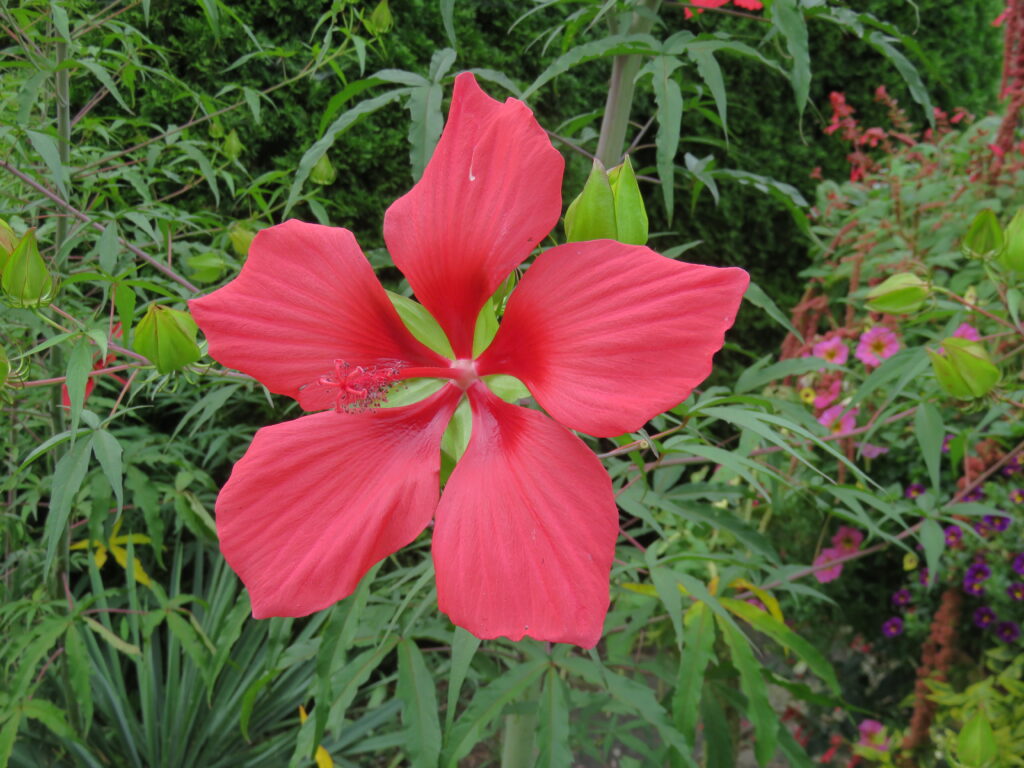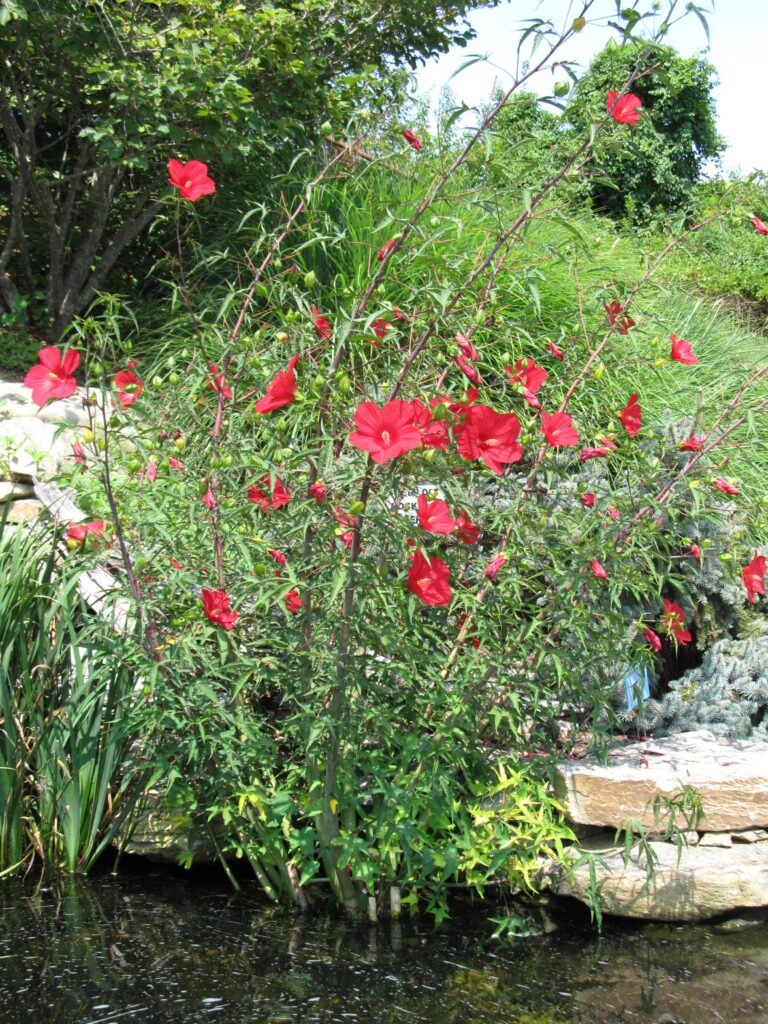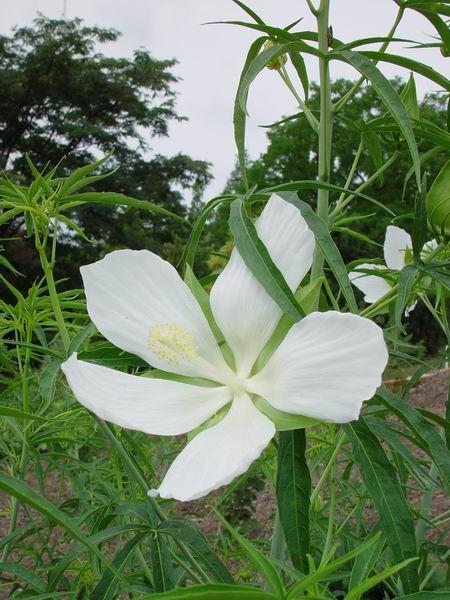
Swamp hibiscus (Hibiscus coccineus), aka scarlet rose mallow, is a hardy perennial plant that grows in swamps, marches and roadside ditches in the Southeastern U.S. (USDA hardiness zones 5-9). It can grow 6 to 8 feet tall and 2 to 3 feet wide. Its 5- to 6-inch-long leaves are palmately lobed into 3, 5, or 7 parts. These finger-like lobes are slender and have jagged teeth along their margins. Deep red flowers are 5 to 6 inches wide appear in mid to late summer.; a white bloom form ‘White Texas Star’ is also available.
Plants are late starters calendar-wise. This herbaceous to semi-woody perennial dies back in the winter and returns in late May, generally following the emergence of (H. moscheutos).They’re fast growers and will reach 5-6 feet the first season. They can grow to be over 6 feet tall and may need staking, depending on their height and position. Swamp hibiscus bloom continuously, although blooms may last only 1-2 days. The plant also attracts butterflies, hummingbirds, and bees.
Swamp hibiscus is easily grown in the Mid-South (TN, NC, VA, KY, WV). Plant in locations with full sun to partial shade and with moist, occasionally wet soils. Propagation is through seed or stem cutting. This plant is slightly salt tolerant.
Flowers of swamp hibiscus appear in late summer to early fall and are large (up to 6 inches wide) and vibrant in color. Swamp hibiscus thrives in sunny, humid, and moist conditions. It grows well in loamy well-drained soils, but is equally at home in wet boggy sites, such as around a pond or edge of a stream. Set them at the back of a perennial border, against a courtyard wall, or in rain and pollinator gardens. The plant attracts butterflies, hummingbirds, and bees. Flowers are a wildlife food source. Deer may damage the brightly colored flowers.

Swamp hibiscus prefers hot and humid summers. If you garden in a northerly area, protect plant roots and crown with a 3-4 inch layer of organic mulch (grass clippings, fallen leaves, or yard waste) in late autumn. Swamp hibiscus can easily susceptible to leaf burn if seasonal rainfall is low. Avoid planting in a windy site.
In early spring fertilize with a 6-month slow-release formula like Osmocote or Nutricote. One pruning option to limit plant height is cut the previous year’s shoots down in late winter. Additionally, cut new spring growth back in early June (4-5 weeks after growth emergence) to encourage branching and lower overall shoots to 3-4 feet by summer’s end.
Plants may be damaged by stem canker, rust, leaf spots, aphids, and Japanese beetles. Swamp hibiscus will usually outgrow most injury by outgrowing these pests and present an attractive floral show. If grown partially shaded, tall plants may need staking.


 Posted in
Posted in 
